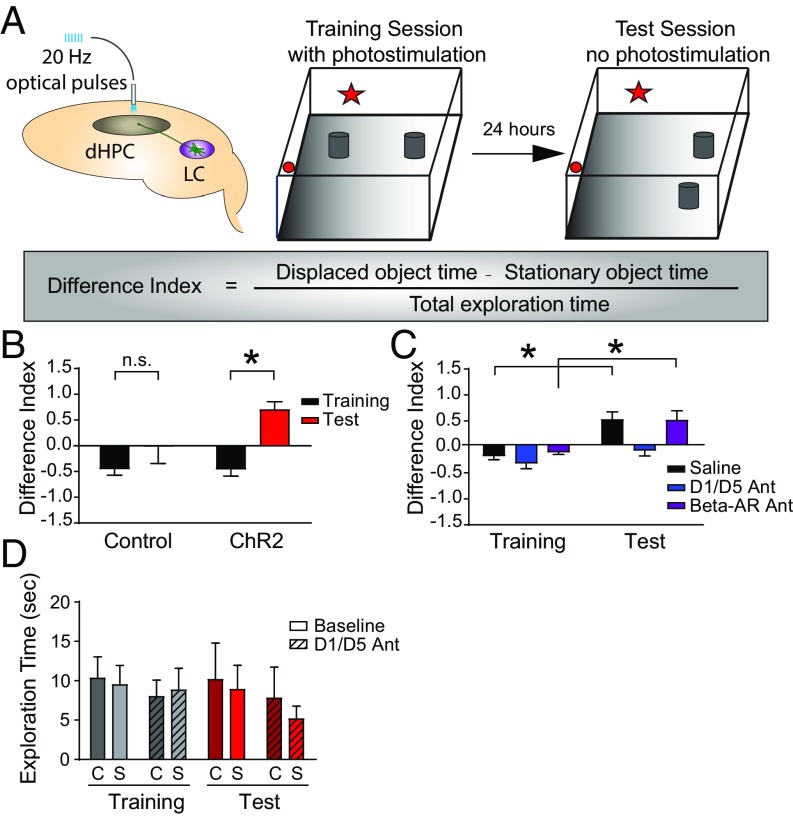Fig. 4.
Dopamine release from the LC to the dorsal hippocampus improved spatial object recognition via dopamine D1/D5 receptors. (A) Experimental paradigm. dHPC, dorsal hippocampus. (B) ChR2-stimulated animals (heterozygous Th-IRES-Cre, n = 10) show significantly enhanced spatial learning compared with control animals (wild-type littermates, n = 6). Difference index: mean ± SEM; ChR2 (n = 10): Training = −0.45 ± 0.14, Test = 0.70 ± 0.15; Control (n = 6): Training = −0.45 ± 0.12, Test = −0.01 ± 0.34; two-way ANOVA, F(1,14) = 16.78; *P = 0.001, Sidak’s multiple comparison test. n.s., not significant. (C) Intrahippocampal injection of SCH23390, a dopamine D1/D5 receptor antagonist, but not propranolol, a beta-adrenergic receptor antagonist (AR Ant), reversed optically stimulated LC-hippocampus–induced enhancement of performance versus saline controls. D1/D5 Ant (n = 6): Training = −0.35 ± 0.10, Test = −0.11 ± 0.10; Saline (n = 7): Training = −0.21 ± 0.08, Test = 0.48 ± 0.15; Beta-AR Ant (n = 4): Training = −0.13 ± 0.05, Test = 0.47 ± 0.18; two-way ANOVA, treatment factor F(2,38) = 6.840; *P = 0.004, Sidak’s multiple comparison test. (D) Total object exploration time during 5 min of training did not change significantly in the presence of the D1/D5 antagonist. C, Control; S, ChR2 optical stimulation (P > 0.05).

